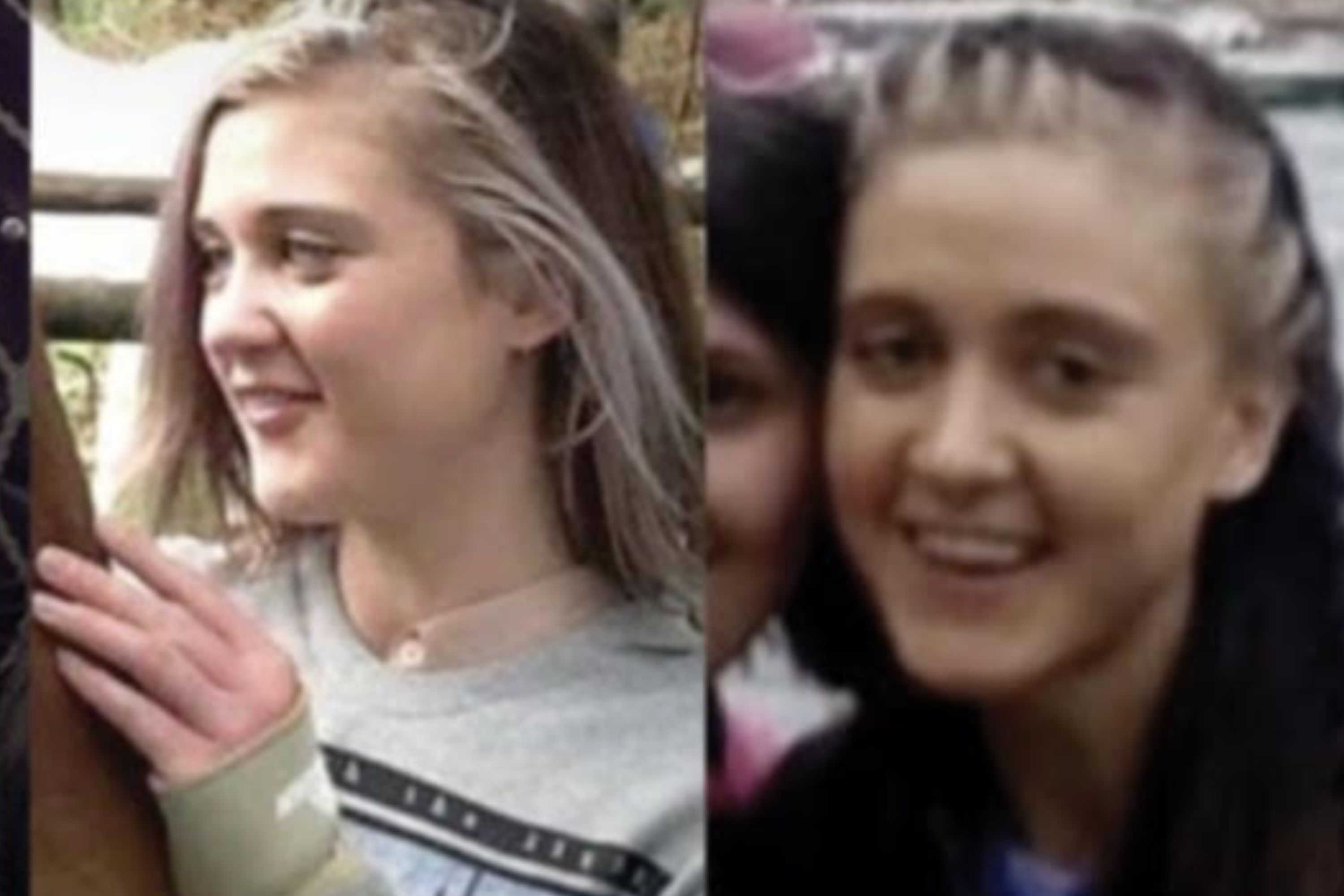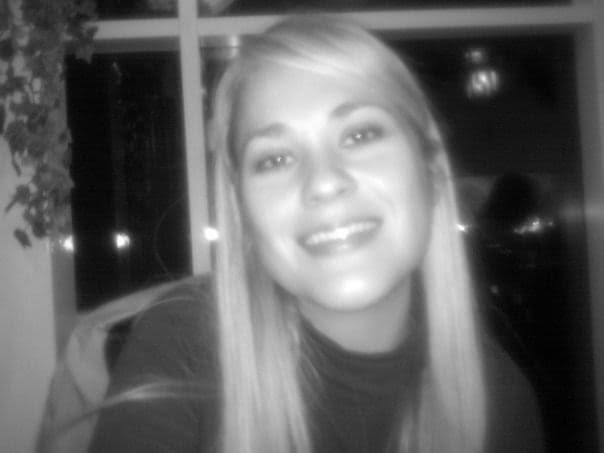Where is Samantha Azzopardi now? The serial con artist featured in Paramount+ documentary Con Girl
She conned many people, many times


New Paramount+ documentary Con Girl, shines a light on the disturbing fraud carried out by young Australian girl, Samantha Azzopardi.
With many stories out in the world about prolific con artist Samantha Azzopardi, most people have lost sight of how many of them contain the truth. Four-part documentary Con Girl begins airing on Paramount+ on February 22, aiming to reveal the truth of the young Australian's elaborate deceptions. Over the course of 15 years, her lies took her to three continents, where she used 75 aliases. With no financial gain to be obtained from the acts of fraud carried out, police and experts were baffled at what drove Azzopardi to act in the way she did. Read on to find out where Samantha Azzopardi is now, and what experts think could be her diagnosis.
For true crime fans, we reveal how to watch The Girl Who Escaped in the UK, the true story of a girl who escaped a serial killer and helped police track him down. After Channel 5 documentary The Girl In The Cellar aired, viewers wanted to know what happened to Natascha Kampusch, and where she is now - the infamous story of her kidnap and imprisonment is chilling. The true story behind Disney+ drama Candy is equally horrifying, and viewers were stunned by the outcomes of the ensuing trial.
Where is Samantha Azzopardi now?
Samantha Azzopardi is believed to still be in prison serving a 2-year prison sentence - she was sentenced in May 2021, and there has been no news of an early release after she was deemed a significant risk to the community.
According to the BBC, Azzopardi was tried in Melbourne, and appeared at a hearing via video link due to covid restrictions. She wore blue prison clothes and matching face mask, and looked at the floor as she was given her sentence, having pleaded guilty to charges of child abduction.
Watch author of The Missing Cryptoqueen @JamieJBartlett in 'Con Girl' available on Paramount Plus now! pic.twitter.com/K7PKvJk9MHFebruary 22, 2023
Unsurprisingly, concerns were raised over Azzopardi's mental health, with the court hearing of the severe trauma and abuse she had been subjected to in her past. A psychiatrist recommended early release should Azzopardi undertake voluntary treatment under specialist services. However, the prison failed to offer the necessary referral.
Although she had spent more than a year and a half detained prior to sentencing, she was denied parole due to high potential for reoffending. Detective Superintendent Gallagher who had been involved in the case, spoke of the costly nature of hunting for Azzopardi, should she reoffend. He added "The problem is whether prison is a suitable place for her. Is she a danger to herself, or is she a danger to others? In Ireland, she wasn't a danger to herself or others, albeit she was a considerable nuisance."
Parenting advice, hot topics, best buys and family finance tips delivered straight to your inbox.

What did Samantha Azzopardi do?
Samantha Azzopardi faked qualifications to get a job as a live-in nanny, and took the children in her care away from home without permission. She also pretended to be a victim of sex trafficking, and claimed to be Swedish royalty.
She also posed as a Russian gymnast, suggesting her family had died in a murder-suicide incident. Aside from these major incidents, Azzopardi repeatedly lied, pretended to be a young teenager when she wasn't, and assumed many aliases with which to tell lies and stories.
She initially came to the attention of authorities in Australia in November 2007, at the age of 19. She claimed to be actress Dakota Johnson, and was charged with intent to defraud. In September 2010, she posed as a student, attempting to attend two schools in Brisbane. She was exposed and rejected from both, when her reference letter was discovered as fraudulent.
She came to wide attention in the UK when she was found mute in Dublin in 2013, outside the General Post Office - she became known as GPO Girl, with no other way to identify her. The Garda Síochána found her pacing outside the post office, where she refused to communicate verbally, but indicated she was 14-years-old; she would've actually been 25. She was taken to hospital where she remained mute for weeks, and eventually believed to be a victim of human trafficking.
In September 2014 at the age of 26, Azzopardi attended a health centre in Calgary in Canada, claiming her name was Aurora Hepburn. Pretending to be a victim of sexual assault and abduction, her identity was quickly revealed. She was charged with public mischief, and sentenced her to two months detention which had already been served. A week later, she was deported back to Australia.
Countless other stories emerged involving Azzopardi's lies. American backpacker, Emily Bamberger, revealed Azzopardi tricked her into believing she was a member of Swedish royalty. She claimed to be called Annika Dekker, suggesting she had been kidnapped as a young child. She tricked a Perth family into believing she was a Russian gymnast, who had lost her entire family in a murder-suicide in France.
She convinced social services in Sydney that she was a teen victim, 13-year-old Harper Hart. This resulted in her being enrolled at the Good Shepherd School at Marrickville in New South Wales, and offered foster care. In June 2017, she was charged with "dishonestly obtaining financial advantage by deception, for the education, counselling, food, accommodation and electronics she was given while posing as Harper" and sentenced to a year in prison and managed to get enrolled in a school and put into a foster home.
Her final crime before her current prison sentence, was to fake documents allowing her to work as a nanny in Victoria, to a French couple with two children. Azzopardi claimed to be an 18-year-old au pair called Sakah. She one day asked to take the children on a picnic, instead taking them 120 miles from home. She was found in department store pretending to be a pregnant teenager, before being arrested for child abduction.

Samantha Azzopardi: Parents
Not much is known about Samantha Azzopardi's parents Bruce Azzopardi and Joan Marie Campbell, other than they divorced when she was 2-years-old.
She had been born in the Sydney suburb of Campbelltown, in 1988. She lived with her mother until the age of 11, when her father was granted custody. From there, she moved around, attending many different schools - it was here that she began making up past histories and life stories for herself.
According to The New Yorker, Azzopardi's mother at one time had an Irish boyfriend, but the relationship broke down. In the summer of 2013, she decided to visit the man, Joe Brennan, in Clonmel. The small town sat southeast of Dublin, along the bank of the River Suir. She stayed for three weeks before leaving abruptly. Joe wasn't concerned, as he knew she often displayed erratic behaviour - he assumed she had gone home without warning him. He was eventually responsible for revealing her identity when she lay mute in a Dublin hospital, and her lies and stories began to spiral out of control from this incident.
A post shared by @shanewritesbooks
A photo posted by on
Samantha Azzopardi diagnosis
Samantha Azzopardi was found by an Australian forensic psychiatrist to be suffering borderline personality disorder and pseudologia fantastica.
Pseudologia fantastica is a rare condition, and chronic behaviour where the sufferer habitually and compulsively lies. The lies often have no obvious purpose other than to portray the sufferer as a hero or victim. It is defined by the National Library of Medicine as "Chronic lying/storytelling that is unrelated to or out of proportion to any clear objective benefit, where qualitatively the stories are dramatic, detailed, complicated, colourful, and fantastic.
The stories typically feature the pseudologue as the hero or victim and seem geared to achieve acceptance, admiration, and sympathy. In terms of insight, the pseudologue lies somewhere along a spectrum between conscious deceit and delusion, not always conscious of his motives and seeming at least intermittently to believe his stories yet never to reach the level of conviction that would indicate a loss of reality-testing."
The term emerged in medical literature in 1890, coined by by G. Stanley Hall and in 1891 by Anton Delbrück. There condition remains poorly understood, with a widely agreed-upon description or diagnostic criteria for it is to exist. This has resulted in controversy regarding what it truly means to have the condition, with some theories pointing to root causes including stress, an attempt to shift control, and issues relating to low self-esteem.
Related Paramount+ Features:

Lucy is a mum-of-two, multi-award nominated writer and blogger with six years’ of experience writing about parenting, family life, and TV. Lucy has contributed content to PopSugar and moms.com. In the last three years, she has transformed her passion for streaming countless hours of television into specialising in entertainment writing. There is now nothing she loves more than watching the best shows on television and sharing why you - and your kids - should watch them.